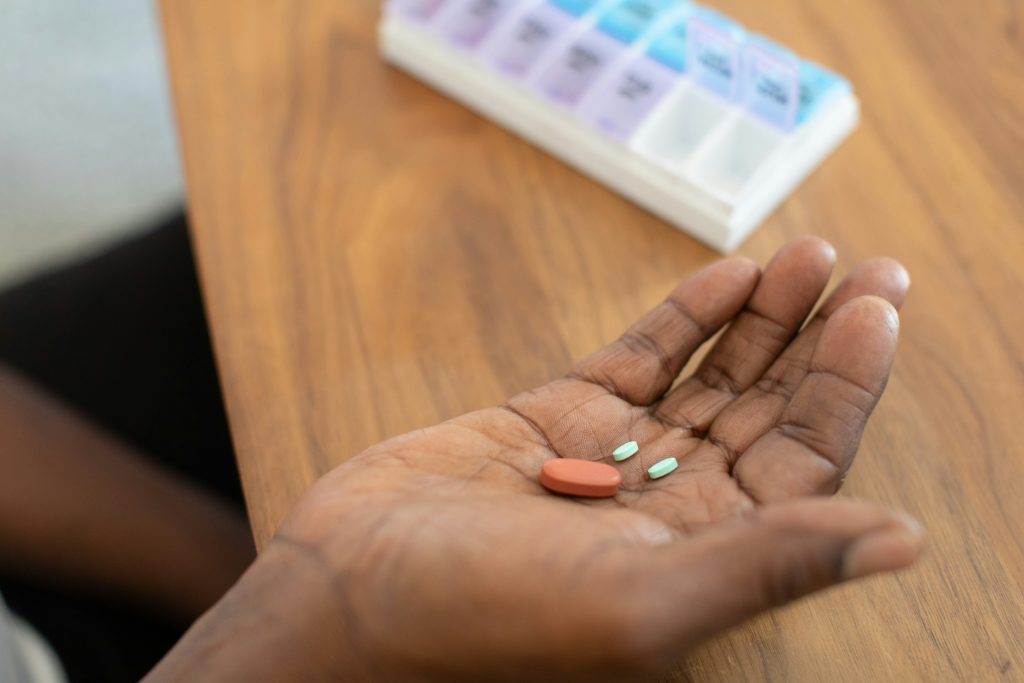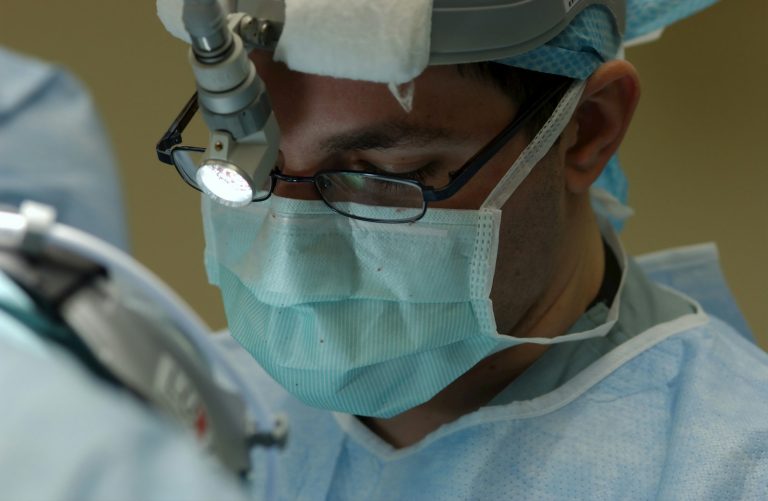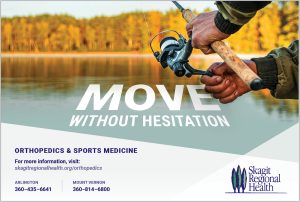Migraine Headaches: Press Release from National Institute on Aging, June 30, 2021
Chronic ConditionsClinical ResearchDietary RestrictionNeuroscienceNutrition
Chip Rose, 301-496-1752, NIAPressTeam@mail.nih.gov
Frequency, intensity of monthly migraines declined among those on higher fish oil diet
A diet higher in fatty fish helped frequent migraine sufferers reduce their monthly number of headaches and intensity of pain compared to participants on a diet higher in vegetable-based fats and oils, according to a new study. The findings by a team of researchers from the National Institute on Aging (NIA) and the National Institute on Alcohol Abuse and Alcoholism (NIAAA), parts of the National Institutes of Health (NIH); and the University of North Carolina (UNC), Chapel Hill, were published in The BMJ.
 The NIH team was led by Chris Ramsden, a clinical investigator in the NIA and NIAAA intramural research programs, and a UNC adjunct faculty member. Ramsden and his team specialize in the study of lipids — fatty acid compounds found in many natural oils — and their role in aging, especially chronic pain and neurodegenerative conditions. The UNC team was led by Doug Mann, M.D., of the Department of Neurology, and Kim Faurot, Ph.D., of the Program on Integrative Medicine.
The NIH team was led by Chris Ramsden, a clinical investigator in the NIA and NIAAA intramural research programs, and a UNC adjunct faculty member. Ramsden and his team specialize in the study of lipids — fatty acid compounds found in many natural oils — and their role in aging, especially chronic pain and neurodegenerative conditions. The UNC team was led by Doug Mann, M.D., of the Department of Neurology, and Kim Faurot, Ph.D., of the Program on Integrative Medicine.
A Neurological Disease
Migraine, a neurological disease, ranks among the most common causes of chronic pain, lost work time, and lowered quality of life. More than 4 million people worldwide have chronic migraine (at least 15 migraine days per month) and more than 90% of sufferers are unable to work or function normally during an attack, which can last anywhere from four hours to three days. Women between the ages of 18 and 44 are especially prone to migraines, and an estimated 18% of all American women are affected. Current medications for migraine usually offer only partial relief and can have negative side effects including sedation, and the possibility of dependence or addiction.
Potential with Dietary Changes
“This research found intriguing evidence that dietary changes have potential for improving a very debilitating chronic pain condition such as migraine without the related downsides of often prescribed medications,” said Luigi Ferrucci, M.D., Ph.D., scientific director of NIA.
Study of Linoleic Acid Impact on Frequent Migraines
This study of 182 adults with frequent migraines expanded on the team’s previous work on the impact of linoleic acid and chronic pain. Linoleic acid is a polyunsaturated fatty acid commonly derived in the American diet from corn, soybean, and other similar oils, as well as some nuts and seeds. The team’s previous smaller studies explored if linoleic acid inflamed migraine-related pain processing tissues and pathways in the trigeminal nerve, the largest and most complex of the body’s 12 cranial nerves. They found that a diet lower in linoleic acid and higher in levels of omega-3 fatty acids (like those found in fish and shellfish) could soothe this pain pathway inflammation.
Meal Plan Study for Migraine Headaches
In a 16-week dietary intervention, participants were randomly assigned to one of three healthy diet plans. Participants all received meal kits that included fish, vegetables, hummus, salads, and breakfast items.
- One group received meals that had high levels of fatty fish or oils from fatty fish and lowered linoleic acid.
- A second group received meals that had high levels of fatty fish and higher linoleic acid.
- The third group received meals with high linoleic acid and lower levels of fatty fish to mimic average U.S. intakes. Meal plans were designed by Beth MacIntosh, M.P.H., of UNC Healthcare’s Department of Nutrition and Food Services.
Monitoring the Study
During the intervention period, participants monitored their number of migraine days, duration, and intensity, along with how their headaches affected their abilities to function at work, school, and in their social lives, and how often they needed to take pain medications. When the study began, participants averaged more than 16 headache days per month, more than five hours of migraine pain per headache day, and had baseline scores showing a severe impact on quality of life despite using multiple headache medications.
Results and Implication for Migraine Headache Sufferers
The diet lower in vegetable oil and higher in fatty fish produced between 30% and 40% reductions in total headache hours per day, severe headache hours per day, and overall headache days per month compared to the control group. Blood samples from this group of participants also had lower levels of pain-related lipids. Despite the reduction in headache frequency and pain, these same participants reported only minor improvements in migraine-related overall quality of life compared to other groups in the study.
“Changes in diet could offer some relief for the millions of Americans who suffer from migraine pain,” said Ramsden. “It’s further evidence that the foods we eat can influence pain pathways.”
More Study on Other Chronic Pain Conditions
The researchers noted that these findings serve as validation that diet-based interventions increasing omega-3 fats while reducing linoleic acid sources show better promise for helping people with migraines reduce the number and impact of headache days than fish-oil based supplements, while reducing the need for pain medications. They hope to continue to expand this work to study effects of diet on other chronic pain conditions.
This study was supported by the NIH NIA and NIAAA intramural research programs; and NIH grants including 1R01AT007813–01A1, T32 AT003378, DK056350, and UL1TR002489.
Reference: Ramsden, CE, et al. Dietary alteration of n-3 and n-6 fatty acids for headache reduction in adults with migraine: randomized controlled trial. BMJ 2021;374:n1448. doi: 10.1136/bmj.n1448.
About the National Institute on Aging (NIA): NIA leads the U.S. federal government effort to conduct and support research on aging and the health and well-being of older people. Learn more about age-related cognitive change and neurodegenerative diseases via NIA’s Alzheimer’s and related Dementias Education and Referral (ADEAR) Center website. Visit the main NIA website for information about a range of aging topics, in English and Spanish, and stay connected.
About the National Institutes of Health (NIH): NIH, the nation’s medical research agency, includes 27 Institutes and Centers and is a component of the U.S. Department of Health and Human Services. NIH is the primary federal agency conducting and supporting basic, clinical, and translational medical research, and is investigating the causes, treatments, and cures for both common and rare diseases. For more information about NIH and its programs, visit www.nih.gov.
Copyright Information
The public may reproduce without permission information from the National Institute of Aging (NIA) Web site, except for documents that state another copyright policy applies to them. Restrictions on the reproduction of a document may arise if a private party has sponsored it. Information presented on NIA’s Web site is authored and owned by the Federal government which is in the public domain.
https://www.nia.nih.gov/about/policies
NIH…Turning Discovery Into Health®
###
Vibrant Senior Options Home





















